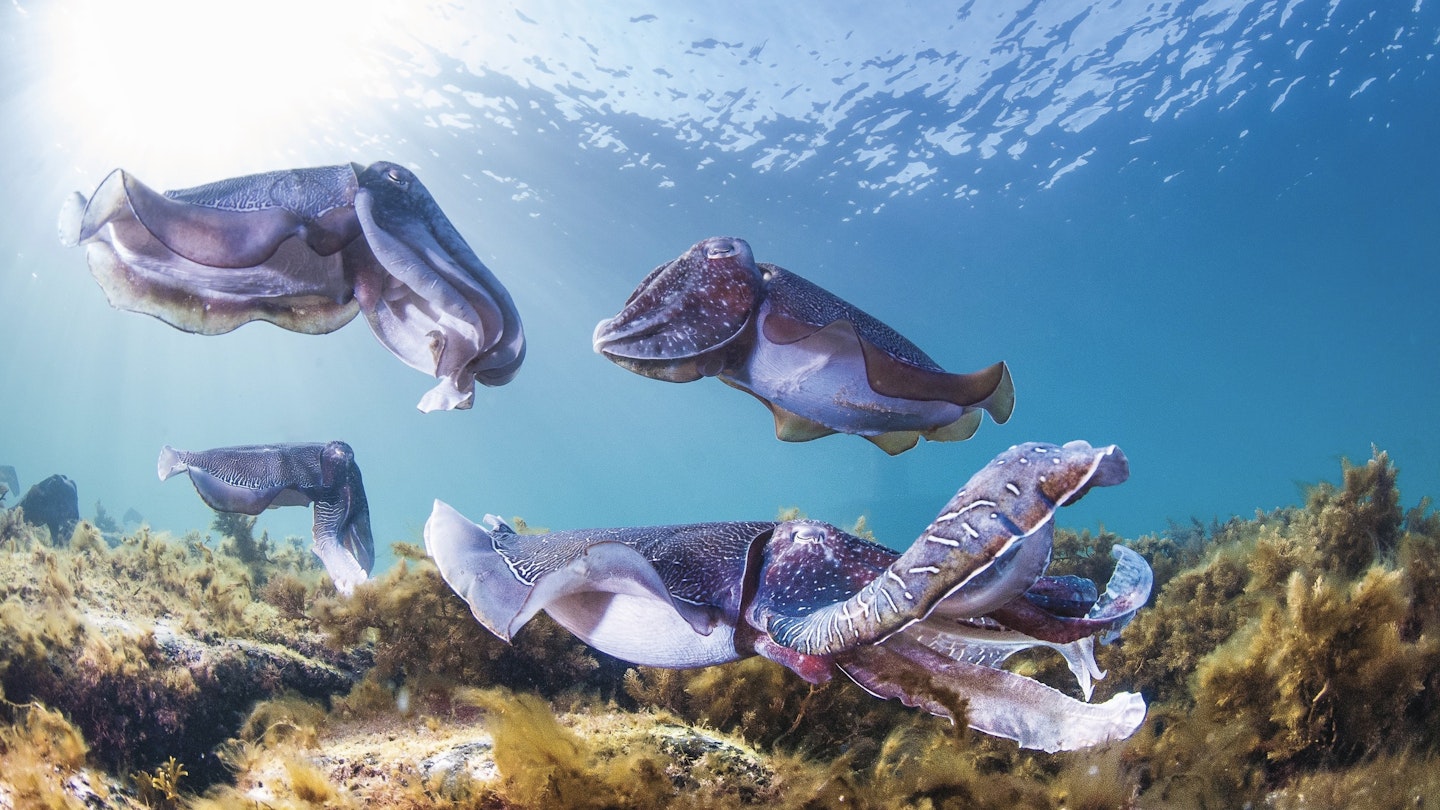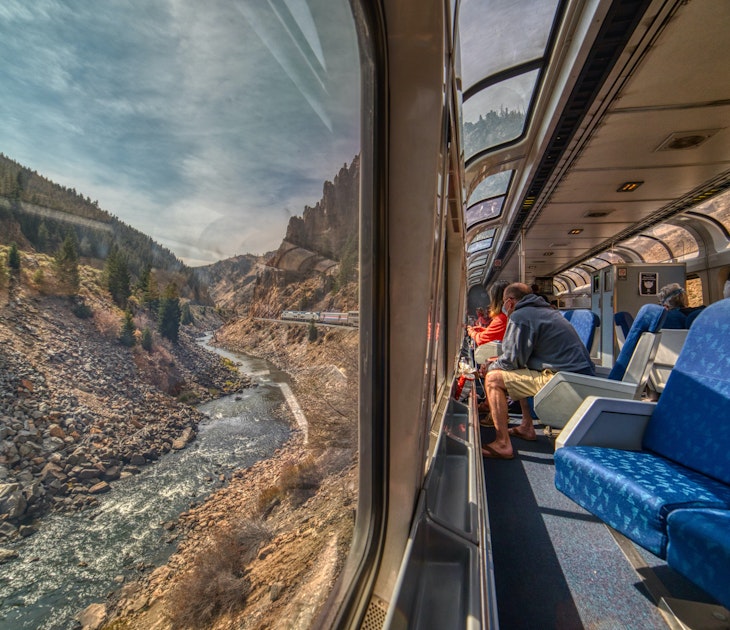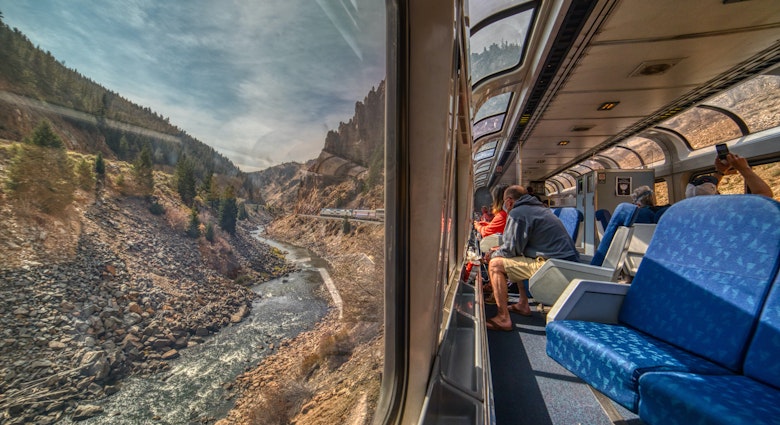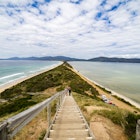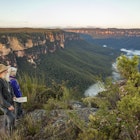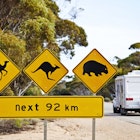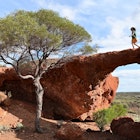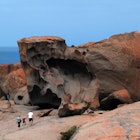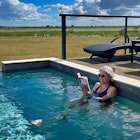The natural world is full of eye-catching mating rituals. Male birds of paradise flash their brightly coloured feathers and perform energetic dances and red-striped garter snakes roll around in ‘mating balls’, but the title of most spectacular mating ritual may well belong to the Australian giant cuttlefish.
Each year from May to August, hundreds of thousands of these alien-like creatures gather along a small stretch of South Australian coastline where they use the millions of colour cells in their skin to put on a dazzling light show. And because this gathering happens just metres from the shoreline, it’s surprisingly easy to witness. You just need a good wetsuit to brave the chilly waters.

Chameleons of the sea
Cuttlefish are so adept at changing the pigmentation of their skins to blend into their surroundings that it’s possible to see the colours rolling across their skin as they shimmer over different environments. They also change their body shapes –and even the texture of their skin – to mimic sand, rocks and seaweed on the ocean floor.
Throughout the year, cuttlefish use these remarkable powers of disguise to avoid detection by both predators and prey but during mating season they put their abilities to a different use. As males gather around a female, they exaggerate their size by flattening themselves out and elongating their bodies, which can grow up to 1m long and weigh upwards of 5kg.
If that’s not enough to prove their supremacy, these alpha males turn their skins into shimmering opalescent canvases streaked with intricate patterns of dots and stripes. These maze-like designs are crossed with iridescent blues, pinks and greens that are shocking in their brightness. Watching two males compete is truly mesmerising.
As the competitors circle each other in a slow-motion ballet, waves of shade and colour rapidly pulse across their skins. Once a male has established himself as dominant, he will guard a female until she's ready to mate and see off any other potential suitors.
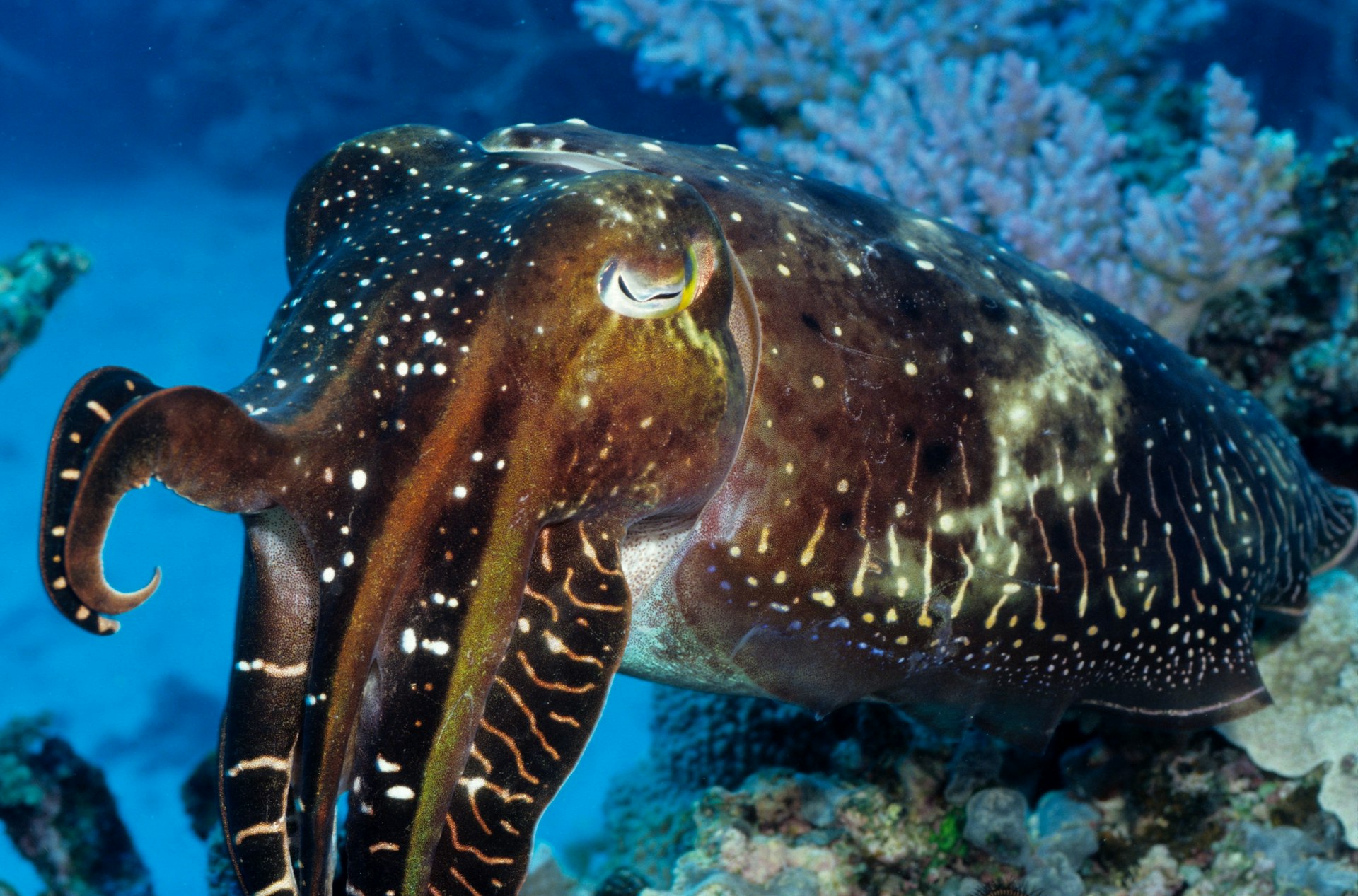
The smaller individuals know they can’t win this competition, so they’ve developed an ingenious technique to get close to the action. Changing their colouration to disguise themselves as females, they attempt to slip beneath the watchful eye of these larger males and reach the waiting females, a tactic that results in about a third of all successful couplings.
With a population density as high as one cuttlefish per square metre in their breeding grounds, they’re impossible to miss and the result is a technicolour spectacle unlike anything else in the world.
South Australia has the only known large-scale mating aggregation of cuttlefish on the planet but we're lucky the creatures are here at all...
Back from the brink
In the late 1990s, commercial fisheries were catching hundreds of tonnes of the giant cuttlefish a year to use as bait when they noticed the numbers begin to drop precipitously. Even after the practice was halted, this decline continued until in 2013 a survey found only 13,492 cuttlefish in total. Scientists still don’t fully understand what was behind the huge fall, and though the numbers have since rebounded into the hundreds of thousands, the reasons for the resurgence are just as mysterious.
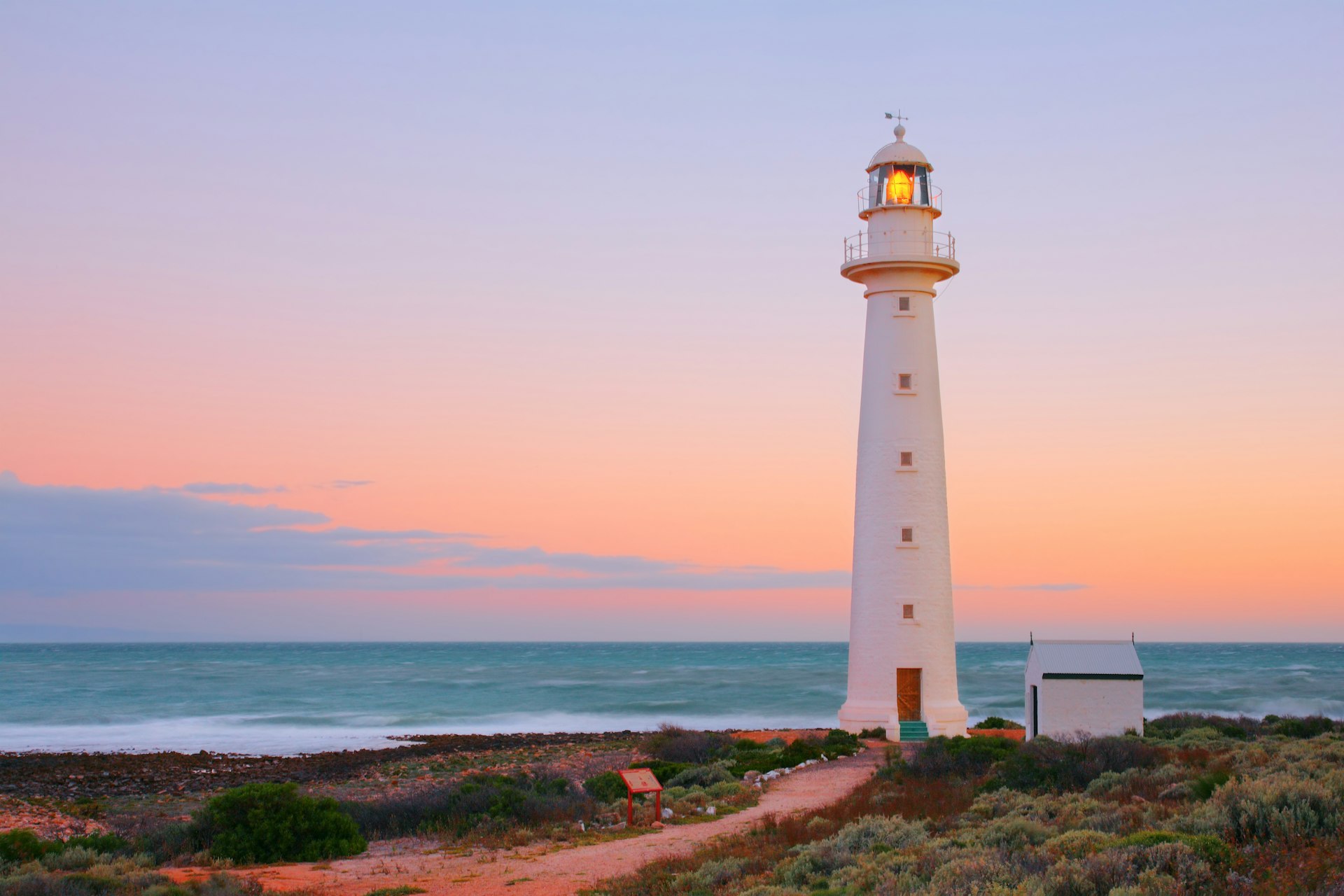
The life cycle of the cuttlefish is only 12 to 18 months and each individual only participates in a single breeding season resulting in a boom and bust cycle that makes them particularly prone to environmental changes. Nobody knows where they go between spawning and returning to breed, or why the Spencer Gulf is the only place in the world that they breed in large numbers, making this population as interesting to scientists as it is marine life lovers.
Why Whyalla?
Divers first observed the mass aggregation of cuttlefish in the Upper Spencer Gulf, 20km outside the industrial town of Whyalla, in the 1990s. For years, it remained largely unknown outside of this community and it’s rare to find more than a handful of people swimming at the two main snorkelling areas outside of the annual Cuttlefest – most of the time there is nobody at all in the water.
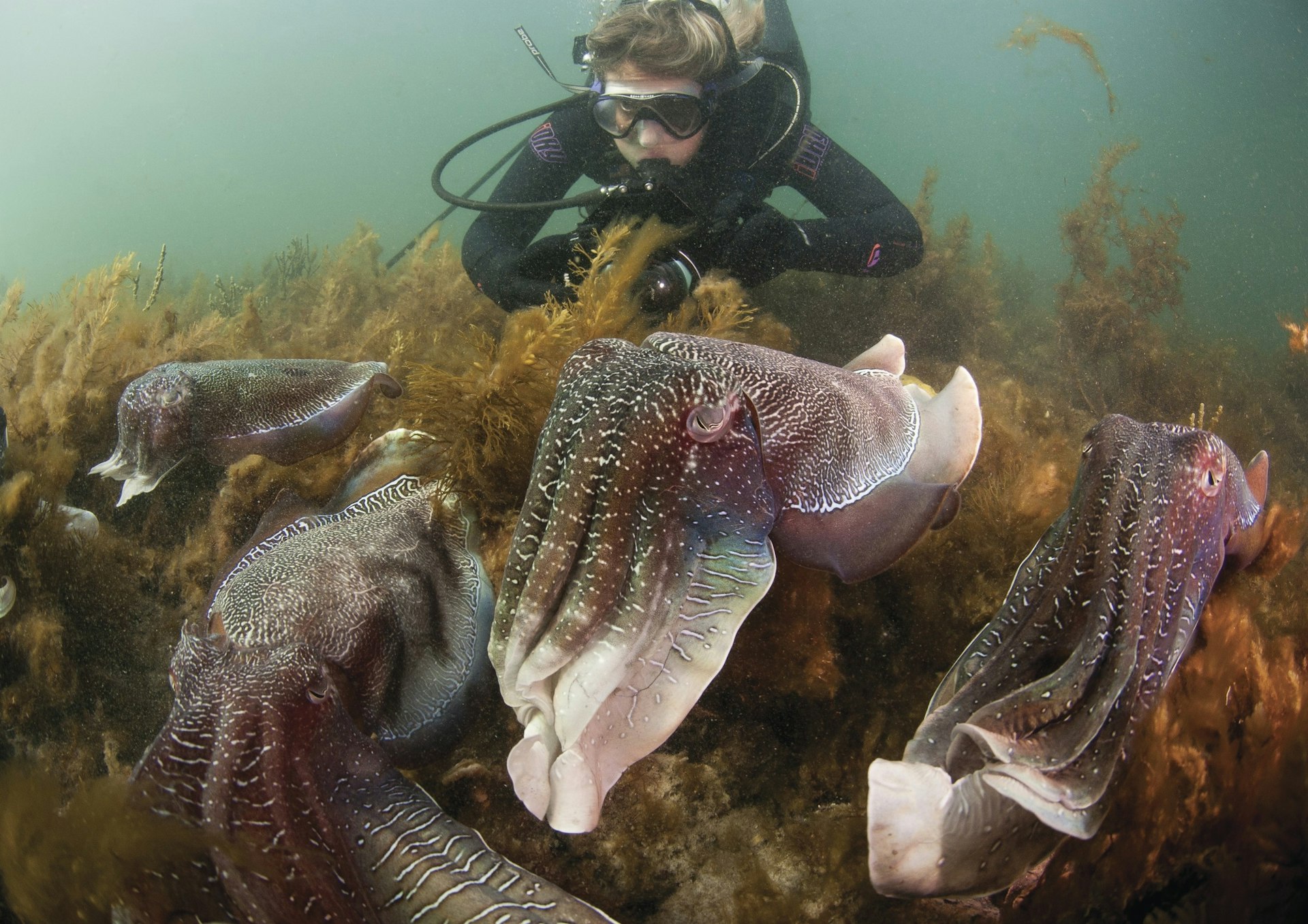
Though it’s on a major highway, Whyalla is not high on the Australian tourist trail – the main sights are a museum paying tribute to the long-defunct shipyards and a lookout that offers a view over the local steelworks as well as the Flinders Ranges on the other side of the Gulf.
Those steelworks are the largest employer in Whyalla and when they were placed under administration in 2016 the entire town held its breath as hundreds of jobs were lost. Fortunately a new owner was found and, thanks to his plans to turn Whyalla into a green energy hub, the town is rebounding along with the cuttlefish population.
Off the beaten track: how to get there
The best place to see the cuttlefish aggregation is at Stony Point. From Whyalla, follow the Lincoln Highway north from town and after 10.5km turn right onto Inkerman Road, which turns into Port Bonython Road. After 20km, a dirt road to the right is signposted as Cuttlefish Drive, and from there it’s a bumpy 1.5km drive along the fence-line of a nearby hydrocarbon processing facility to a basic car park with a shelter and toilet block.
A ramp and bollards lead down into the ocean and placards provide some information about the cuttlefish.
If the wind is coming from the east and the water is choppy, nearby Black Point is another good option.
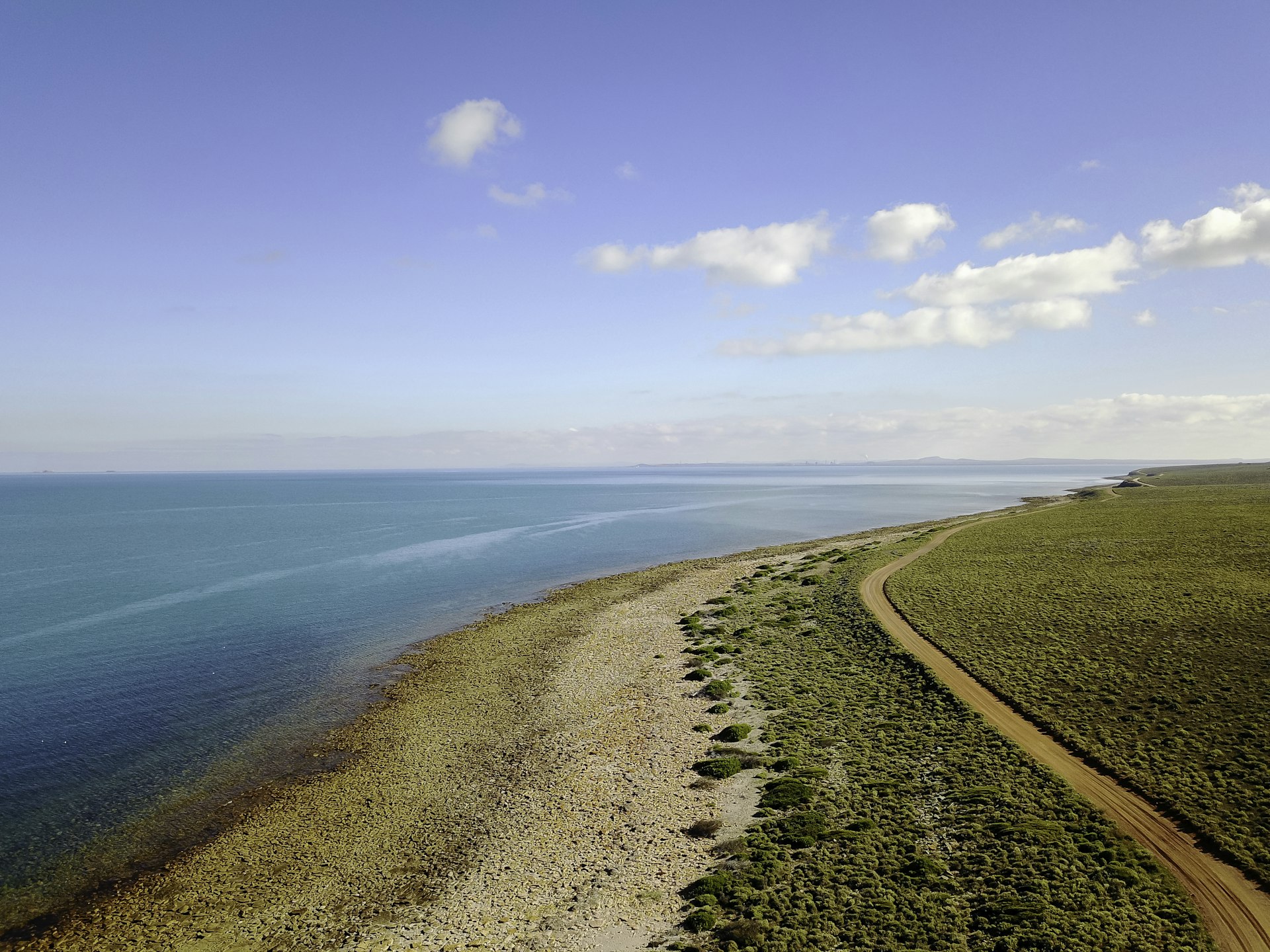
Whyalla is 385km from South Australia’s Capital, Adelaide, but without a vehicle the only way to reach either spot is on an organised tour from Adelaide. If you’re not the best navigator – or swimmer – then that’s probably the best way to go!
Morning is the best time to swim with the cuttlefish as afternoons can get windy and reduce visibility. Fortunately the average depth of both breeding areas is 4m and the cuttlefish gather in water as shallow as half a metre, so they are visible in almost all conditions.
The water temperature can be as low as 12˚C so as well as a snorkel, you’ll need a wetsuit at least 5mm (preferably 7mm) thick, along with a hood and gloves, all of which are available for hire in Whyalla.
You can’t get much further off the beaten track for the experience of a lifetime.
The writer travelled with support from PureSA which offers cuttlefish tours from Adelaide. Lonely Planet contributors do not accept freebies in return for coverage.
